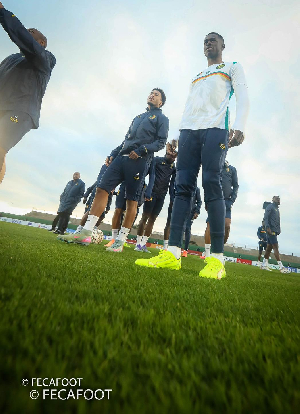The popular African proverb ‘teach me how to fish rather than giving me fish’ fits well with the concept of Human Rights Based Approach, which lies at the heart of rights based organisations, including ActionAid.
Human rights are rights inherent in all human beings, regardless of nationality, location, sex, ethnic origin, colour, religion and language. We are all equally entitled to our human rights without discrimination.
Human rights entail both rights and obligations. Countries assume obligations and duties under international law to respect, protect and to fulfil human rights.
The obligation to respect means that States must refrain from interfering with or curtailing the enjoyment of human rights. The obligation to protect requires States to protect individuals and groups against human rights abuses.
The obligation to fulfil means that States must take positive action to facilitate the enjoyment of basic human rights. At the individual level, while we are entitled to our human rights, we should also respect the human rights of others.
Human Rights Based Approach A human rights-based approach is a conceptual framework for the process of human development that is normatively based on international human rights standards and operationally directed to promote and protect human rights. It seeks to analyse inequalities and redress discriminatory practices and unjust distributions of power that impede development progress.
The Human Rights Based Approach to poverty eradication interprets poverty as a direct consequence of the denial or violation of human rights and the result of unequal power dynamics in the process of claiming one’s rights.
Principles of HRBA
• Equality and Non-Discrimination • Principle of Participation • Principle of Accountability • People-centred Approach (Empowerment)
Three Types of HRBA
Type one emphasizes working directly with government to promote, protect and fulfil the rights of people. This can be described as the supply side approach to HRBA. This approach is typical of bilateral and multilateral donor agencies who support government to realize the rights of their citizens.
Type two is the demand side approach where rights-holders are empowered to recognise their rights, claim them and meaningfully participate and influence development processes. This type also looks at roles and capacities of duty-bearers and how to hold them accountable to their duties.
The third type is the combination of the demand and supply side where rights-holders are empowered to recognise and claim their rights, and government is supported to facilitate the realisation of the rights. This is the type practised by ActionAid.
When people are treated as less than human, they often feel that they have no rights. They are robbed of their dignity, self-worth and sense of equality with others. This further deepens their sense of powerlessness and impacts on their ability to stand up for themselves. The human rights-based approach is also explained as having poor people fulfil their individual needs by claiming or securing their human rights.
Typically, HRBA seeks to: • Introduce human rights values and principles in development interventions.
• Analyse correlations among rights violations and their root causes.
• Analyse the power underlying and influencing the issue around the problem.
• Empower rights-holders to recognise and claim their rights, and meaningfully participate and influence development processes affecting them.
• Facilitates the equal participation by individuals from vulnerable and marginalised groups.
• Assess duty-bearers roles and capacities and hold them accountable to their duties.
• Prioritise and integrate strategies and objectives, to go beyond issue-based programming. • Give the community and its membership the chance to lead its own programmes and change rather than have them lead by outside organisations.
• Facilitate useful networking for the enrichment of the programmes
Process of securing rights of people living in poverty
The process of securing rights of people living in poverty is as important as the outcome. It starts by raising critical consciousness through purposeful and sustained concientisation. It also involves analysis of the contexts, power-relations and violation of rights. This is followed by planning and organising actions to improve people’s well-being. For those who have been made to believe that they have no rights, and socialised to expect to be treated without dignity or respect, the first step is to challenge and change their perceptions of themselves. This will enable people living in poverty to realise that there is a possibility for change and a sense that people have the power to do something about it.
Addressing people’s needs as rights they can claim
Human rights based organisations have a moral duty to work with people living in poverty to respond to the distress they experience because their rights have been denied and therefore deprived of fulfilling their basic needs. Hence, practical solidarity needs to be provided directly or indirectly by providing short-term services and relief to address these immediate basic needs. Provision of short-term basic services should be seen as a means to an end, to work with people to secure their rights from the state in the long-term. Service delivery (practical solidarity), in terms of provision of money, materials, information, training, etc., is an integral part HRBA.
Ensuring participation and actions of poor and excluded people
People living in poverty must be fully involved in determining their needs and the responses that will be provided to answer them. Though providing people with new schools, wells and boats can serve them on one level, leaving them with less dignity and power to negotiate with others is a failure on another level.
Paying attention to issues of power Since a human rights-based approach seeks to secure equal rights for all people, it inevitably means confronting, or critically engaging with the powerful. It is about resisting oppression, making claims, persuading and negotiating with the powerful, influencing government policy and public opinions through advocacy. While we work at changing an educational policy to increase girls’ access to education, a number of other societal changes need to take place, such as reducing the amount of housework girls need to perform, or eliminating the violence they experience in schools.
Deepening democracy at every level A people-centred advocacy can only succeed if political systems and cultures are open to citizen participation. They need to be open in their decision-making, ready to change and accountable and responsive to pressure from citizens.
States need to recognise their duty to protect and promote people’s human rights. Experience has shown that while the broad approach outlined above can be implemented in all our work in almost all situations, the specific methods, tools and application vary considerably according to the political context in different countries and the exigencies of the times.
By Saani Mohammed Yakubu Deputy Country Director and Head of Policy and Programmes
Opinions of Tuesday, 20 January 2015
Auteur: Saani Mohammed Yakubu















